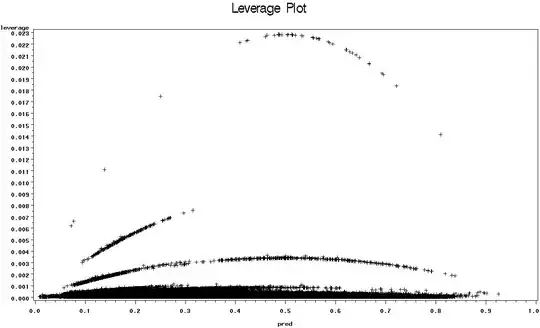I have seen three rules of thumb that depend on $k$, the number of predictors (including the constant), and on $n$, the number of observations.
The average value of L is $\frac{k}{n}$, and you want to examine observations where the leverage is extreme relative to that value.
The ROTs are:
- L $> \frac{2k}{n}$ indicates high leverage (twice the average)
- For small samples, you may want to use $L>\frac{3k}{n}$ (three times the average)
- Others say a point with leverage greater than $\frac{2k+2}{n}$ should be carefully
examined
I am not aware of any rigorous foundations for these, though they may exist.
